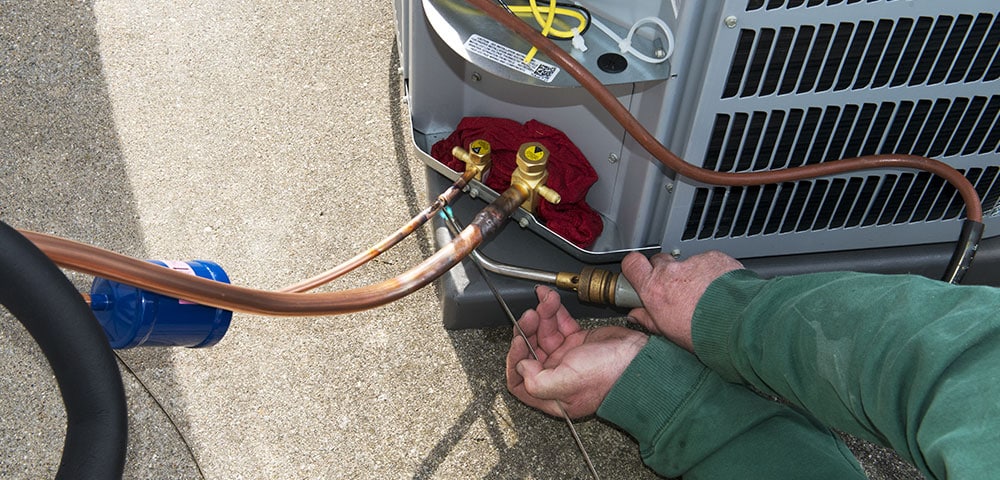If you don’t have money to hire a heat pump repair professional to install the heat pump for you, you must be wondering, can I replace my heat pump myself? The answer to this question will depend on your skills and experience level.
If you can replace your own central air conditioning system, go ahead and replace the heat pump but if you don’t have the skills, let a professional handle it.
Remember that heat pump replacement is complex, and making even a single mistake can lead to plenty of problems. For example, handling the refrigerant without training can lead to undercharging or overcharging the heat pump, which means system failure down the road.
If you feel you have the necessary skills, you should follow the right procedure that includes:
Step 1: Remove the old unit
Begin with disconnecting the old indoor and outdoor units. Disassemble the indoor unit, then move to the supply and return vents and drain line. When it comes to the outdoor unit, disconnect it by cutting the high-pressure and suction lines, disconnect the power, and cut the thermostat wires.
Step 2: Move the new appliance in place
With the old appliance out of the way, you should now put the new unit into place. How you place it into place depends on the make of the unit. For best results, place the appliance so that the new unit is in line with the ductwork.
While at it, flush the coolant lines and connect the thermostat wiring. Once everything is in place, connect power to the unit by feeding power through the connector and up through a knock-out.
Step 3: Install a filter dryer and braze the high-pressure line.
You should braze all coolant lines. To do this, install the filter dryer and the high-pressure line. To do this, fit all the high-pressure line components, then fire up the acetylene torch and prepare the brazing rod.
To have an easy time maneuvering the rod into place, use the torch to create a 90-degree bend in the brazing rod.
Once the high-pressure line is in place, now braze the suction line.
Step 4: Size new indoor unit
Measure the new unit for size and working to ensure the supply and return ductwork connect properly. As you make the measurements, you should note that new units tend to be bigger hence the higher efficiency ratings.
The large size of the units often makes it hard for them to fit the same location as the old unit. Due to this, you have to trim some of the ductwork.
After obtaining your desired size, move the indoor unit in place. When doing it, remember that most manufacturers pressurize the coils with nitrogen to ensure no leaks. When you remove the plugs, you should hear nitrogen exiting the system.
Step 5: Evacuate the coolant lines.
To evacuate the line set, set up a vacuum pump. Le the pump run for at least 15 minutes and target about -30 psi on the suction line. After running the pump, let the gauges sit to ensure there are no pinhole leaks present.
After this, charge the line set with Freon.
Step 6: Connect the drain and emergency shut off.
Once everything is in place, install the emergency shut-off system on the pan, then reuse the old wiring to connect power to the unit.
Too complicated for you?
If you don’t have the skills or feel the work is too complicated for you, don’t try to install the heat pump yourself. Instead, hire a contractor to help you.
To hire the right contractor, you need to consider the experience level of the professional. How long has the contractor been around? This is vital as you don’t want an inexperienced professional that will end up damaging your appliance.
The other thing you should consider is the quality of work the contractor delivers. The contractor might have worked in different areas, but they provide poor services. To confirm the quality of services the heat pump repair services McLean provider provides, check reviews left by previous customers. Also, contact the references given to you by the contractor.
As a rule of thumb, avoid a contractor with many negative reviews as they will most likely damage your work.


